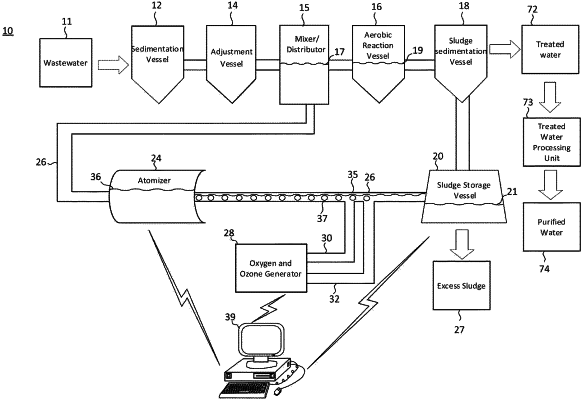|
11. A system for wastewater treatment control through microorganism metabolic pathway optimization, comprising: a computer configured to: receive a user input comprising at least one of a time of a digestion of one or more pollutants and a degree of digestion of the one or more of the pollutants by microorganisms in a sludge capable of digesting the one or more of the pollutants by exercising a digestive function via one or more catabolic pathways to obtain energy and store the energy in a form of adenosinetriphosphate (ATP), wherein the sludge is mostly free of the one or more of the pollutants; store an association between how quickly an at least reactive gas dissolves within the sludge to a predetermined concentration and a degree to which the microorganisms exercise the digestive function upon encountering the one or more of the pollutants following the at least one reactive gas dissolution; determine a time during which the at least one reactive gas needs to dissolve to the predetermined concentration within the sludge based on the user input using the association; a gas generator under a control of the computer configured to generate the at least one reactive gas that is provided into the sludge; a machine under a control of the computer and comprising one of an atomizer or a pump, the machine configured to: forming a gas-dispersion return sludge by at least partially dissolving the at least one reactive gas in the sludge in the determined time to reach the predetermined concentration within the sludge; form a mixed liquor by providing the gas-dispersion return sludge for combining with a wastewater that comprises the one or more of the pollutants, wherein upon encountering the one or more of the pollutants in the wastewater, the microorganisms store an amount of the ATP during an initial time period that is dependent on the determined time and wherein the microorganisms exercise the digestive function during a further time period based on the amount of the ATP created and stored during the initial time period.
|
